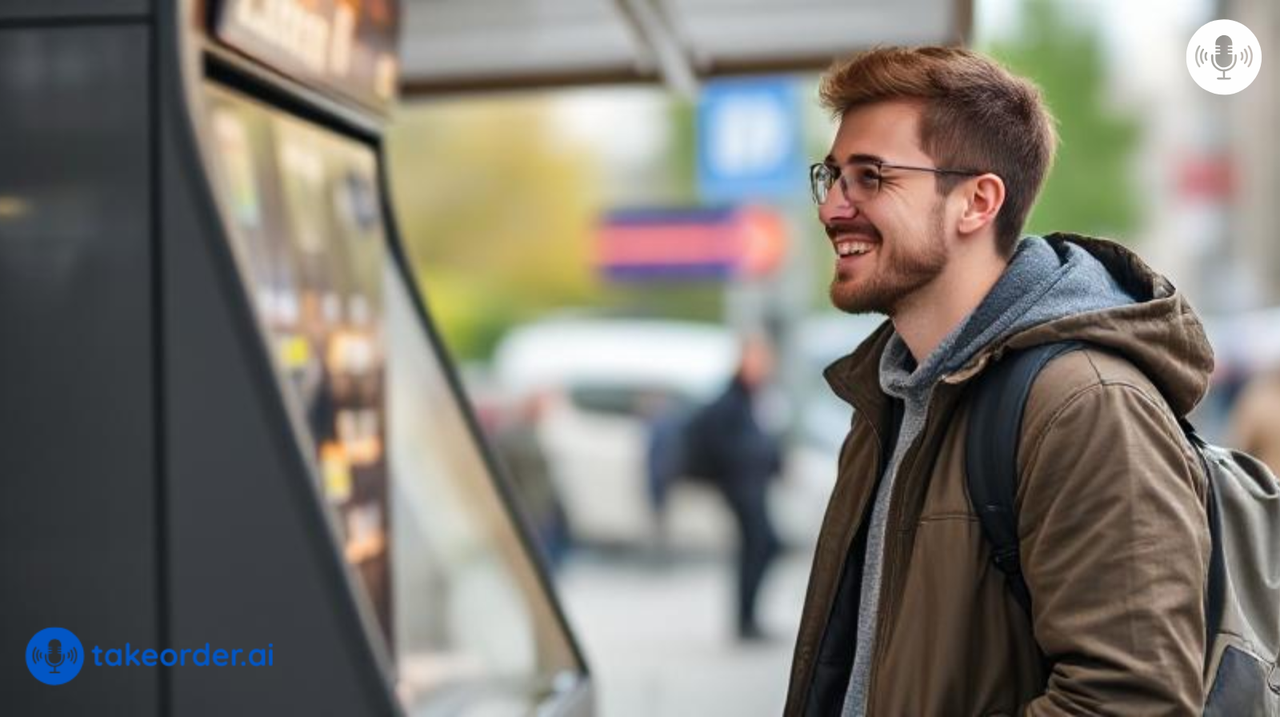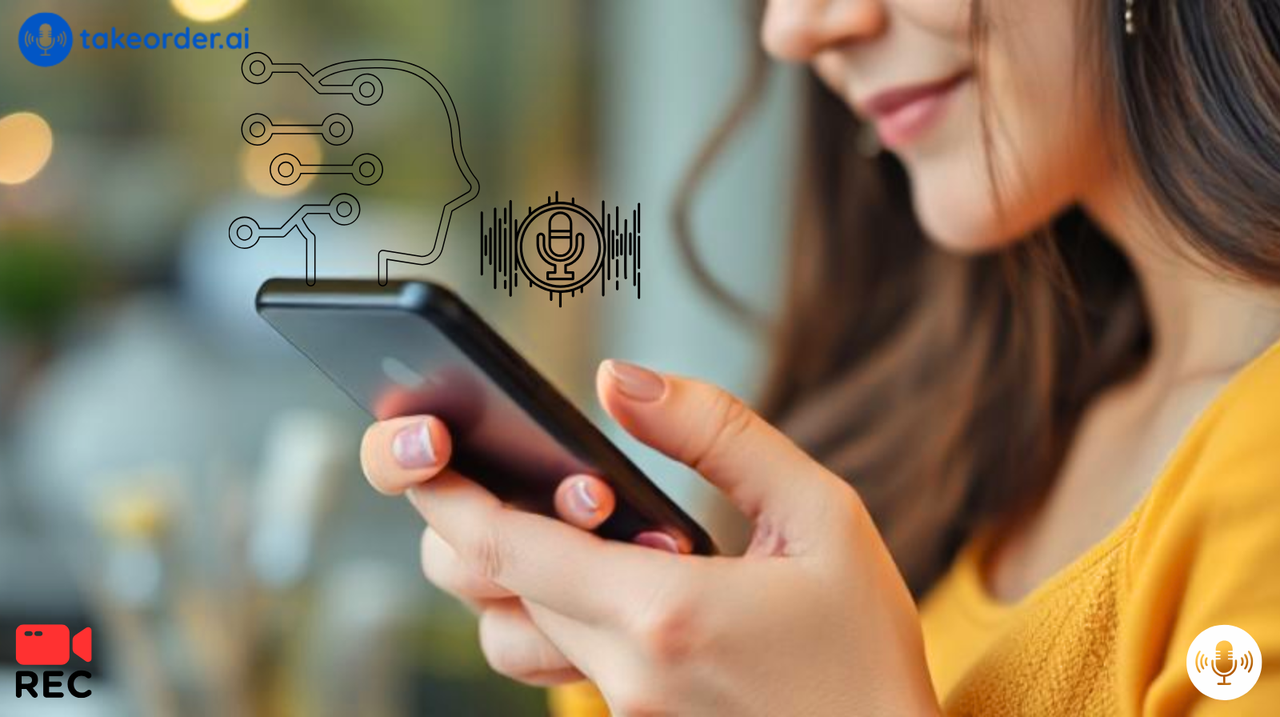
There’s something deeply human about talking. It’s instinctive, the first way we learned to connect, ask for what we want, and express ourselves.
Yet, somewhere between online menus and touchscreen kiosks, the act of ordering lost a bit of that natural rhythm. We began typing, tapping, and scrolling our way through systems that often felt more like forms than conversations.
Now, voice technology is bringing the warmth back. Guests are talking again, not to servers this time, but to AI that actually listens, understands, and responds. And surprisingly, people are loving it.
Why do we instinctively feel more comfortable speaking than typing?
Let’s explore the psychology behind this shift and how Takeorder AI, sometimes searched as Take Order AI, is shaping the next era of effortless, natural restaurant service.
Ordering food shouldn’t feel like filling out paperwork. Yet that’s what happens with many digital menus and apps. You scroll, type, correct, and recheck before finishing.
Talking, on the other hand, feels easy. You can say what you want in one natural sentence: “Hi, can I get a pepperoni pizza with extra cheese, and make it half and half with mushrooms?” and that’s it.
Why does this feel so effortless?
Typing may be functional, but speaking is instinctive. That simple psychological difference reshapes the entire dining experience.
There’s a reason we talk about conversation flow. Our brains are wired for speech, not for typing. Long before written language, humans used tone, rhythm, and emotion to communicate. That hasn’t changed.

When people speak, they express ideas effortlessly. Talking engages multiple brain regions, emotional, auditory, and social, making the act of conversation feel smooth and satisfying. Typing, in contrast, is a visual and manual task that requires deliberate focus.
In a restaurant setting, this matters. Guests don’t want to input data; they want to be heard.
Voice ordering taps into cognitive fluency, the concept that humans prefer experiences that feel easy and natural. The less effort something takes, the more we enjoy it.
That’s exactly what Takeorder AI, an AI voice ordering system for restaurants, is built for: reducing effort, maintaining flow, and making ordering feel as natural as chatting with a friend.
There’s something emotional about hearing a voice, even when it’s synthetic. It’s why people name their GPS systems or talk to their smart speakers. In psychology, this is linked to anthropomorphism, our tendency to see human traits in non-human things.
A warm, clear voice creates comfort and trust. When an AI voice says, “Sure, I’ve added that to your order,” it feels reassuring. That emotional connection makes guests more likely to order confidently and to return.
Takeorder AI, or Take Order AI, designs its voice systems with that in mind. Its conversational technology adapts to tone, pace, and emotion, ensuring every guest feels heard and valued.
This isn’t about pretending to be human; it’s about understanding how humans feel.
Typing, tapping, and scrolling may seem quick, but they require constant attention. For younger guests, it’s second nature. For older diners, families, or multitaskers, it can be tiring.
Imagine placing a pickup order with one hand while holding your phone in the other. You miss a menu item, correct a typo, and start again. Frustration builds.
Now imagine simply saying, “I’ll have one veggie wrap and a lemonade.” Done. No typing. No menus. No confusion.
Voice removes micro-barriers, tiny obstacles that make digital ordering feel like work. Those small points of friction often cause guests to abandon their orders halfway.
That’s why Phone AI and Kiosk AI exist: to reintroduce effortlessness through conversation, whether it’s over the phone or at a self-ordering kiosk.

These tools fall under what many restaurants now call AI voice ordering assistants or restaurant phone automation systems, and they’re quietly becoming the backbone of modern guest service.
Hospitality isn’t just about service; it’s about tone. Guests remember how they were spoken to more than what was said.
That’s what makes restaurant-specific voice AI different from general-purpose assistants. Takeorder AI doesn’t just recognize words; it interprets them in a hospitality context.
You might hear responses like:
“Got it, one iced coffee with oat milk. Would you like to add a muffin today?”
or
“Sure, your order will be ready in about 10 minutes. Anything else I can get for you?”
These simple touches make guests feel acknowledged. They recreate the warmth of human service while keeping the speed of automation.
This blend of AI voice ordering and hospitality design is what separates Takeorder AI from typical voice bots. It’s what makes technology feel like service again.
Familiarity builds comfort. When an AI remembers your preferences, it creates a subtle emotional connection.
A returning guest might hear, “Welcome back! Would you like your regular coffee order today?” That one line feels personal, even though it’s powered by data.
Pizza AI by Takeorder AI specializes in this. It recalls previous orders, toppings, and combinations so guests don’t have to repeat themselves. Over time, it builds a kind of loyalty through recognition.
For guests, that’s convenience. For restaurants, it’s retention.
This capability, sometimes searched under AI pizza ordering systems or smart restaurant order management AI, shows how conversational memory enhances the dining journey.
Inclusivity is one of the most overlooked aspects of restaurant tech. Not every guest can comfortably read menus, type fast, or navigate screens under pressure.
Voice interfaces naturally solve this.

And for introverted guests, voice kiosks offer a private yet personal experience. No crowd pressure, no need to repeat orders to staff.
Drive-Thru AI and Kiosk AI extend this inclusivity across environments, whether in a car, a food court, or a busy café.
That’s the power of voice technology in hospitality. It makes good service accessible to everyone.
Every voice interaction carries insights. How guests speak, pause, or hesitate can reveal far more than any order form.
With tools like AI voice analytics for restaurants, operators can understand:
This data helps restaurants refine menus, predict demand, and improve customer experience. Instead of collecting feedback through surveys, AI listens quietly in the background, learning what guests actually want.
It’s not surveillance. It’s awareness.
We often talk about convenience in terms of speed, but true convenience is emotional. It’s the relief of being understood, the ease of not repeating yourself, the small delight of a friendly tone when you’re tired or hungry.
That’s what AI ordering assistants like Takeorder AI bring to restaurants. They don’t just make things faster; they make them feel easier.
Guests may not analyze why they prefer voice ordering, but their brains do. It feels natural, smooth, and satisfying. After that, typing feels mechanical.
Voice ordering goes beyond technology. It revives something hospitality has always stood for: human connection.
A calm, welcoming voice saying, “Thank you for your order, have a great evening,” can transform a routine transaction into a pleasant moment.
That’s the secret behind AI voice ordering systems for restaurants like Take Order AI. They aren’t replacing people; they’re recreating warmth in places where screens once took over.
In the near future, voice won’t be seen as an innovation; it’ll just be normal. Guests will expect to speak their orders at kiosks, drive-thrus, or over the phone.

Takeorder AI is already preparing for that world with systems that adapt to tone, understand intent, and handle complex conversations.
Because in hospitality, the most advanced AI doesn’t sound robotic. It sounds like good service.
Your guests are already speaking. It’s time your restaurant listened.
Discover how natural voice ordering can elevate guest experience with Takeorder AI, or book a demo to see how easily your business can adopt voice-first service.
Stay updated on our news and events! Sign up to receive our newsletter.
Thank you for signing up!
Something went wrong. Please try again later.